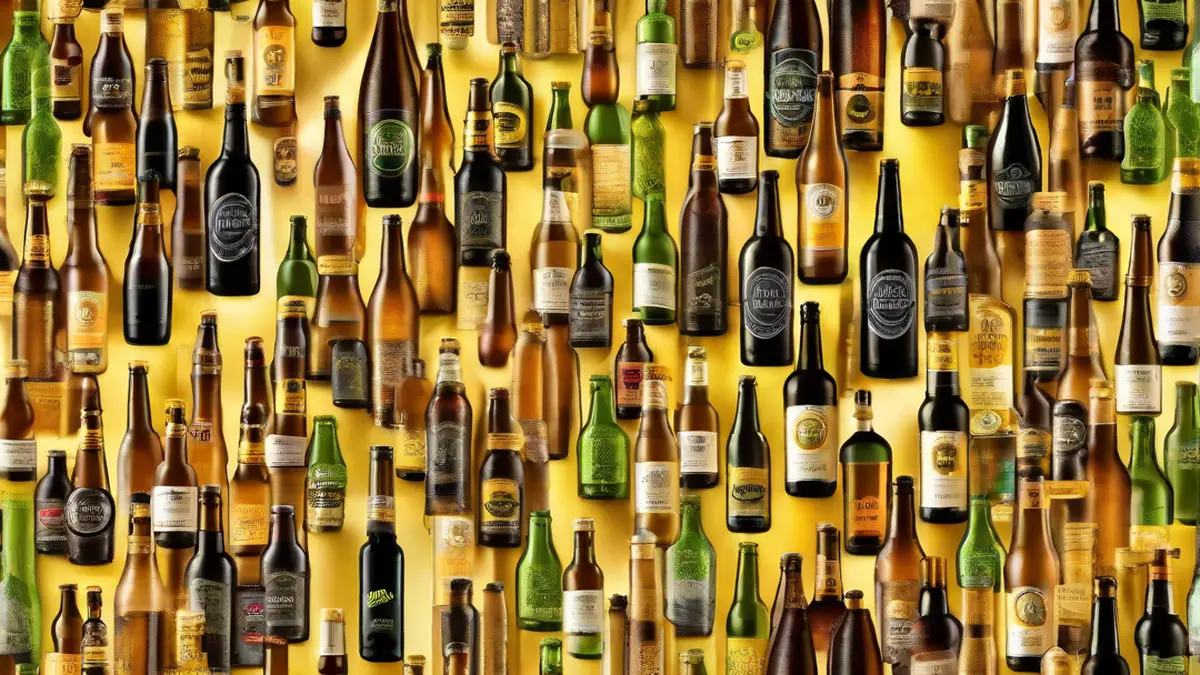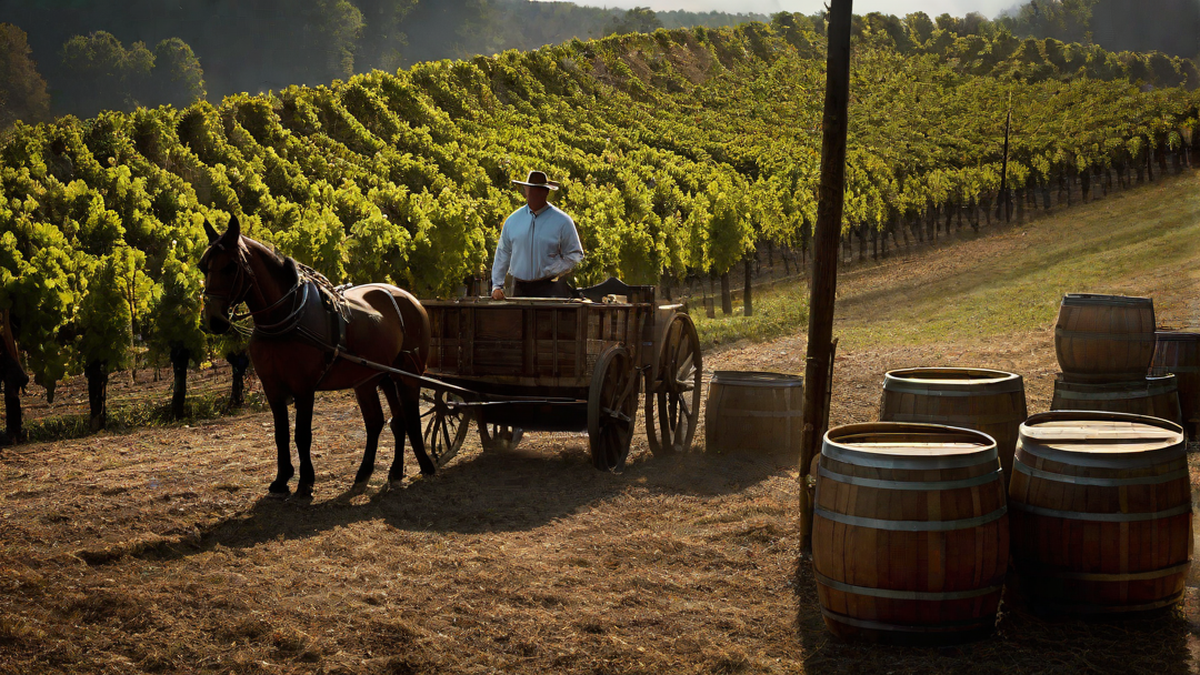Get prepared to explore the captivating realm of grapes, where a straightforward fruit can yield something as unexpected as gas! That’s gas from grapes.. Hang on because we’re about to uncover the scientific enigmas that lie behind this phenomenon. From the gases generated to the factors that impact their production and even methods for extracting these elusive gases we’ll delve into every aspect. So pour yourself a glass of wine. Brace yourself for an enchanting expedition, into the fascinating world of gas derived from grapes!
The Science Behind Gas from Grapes
Gas produced from grapes also known as carbon dioxide is a byproduct that emerges during the winemaking process through fermentation. It is a captivating occurrence that happens when yeast consumes the sugar found in grapes and transforms it into alcohol and carbon dioxide. This gas plays a role in shaping the characteristics of wine contributing to its sparkling nature and distinctive flavor profile.
The science behind the creation of gas from grapes starts with yeast. These minuscule organisms feed on the sugars in grape juice breaking them down via a process called glycolysis. As they metabolize these sugars they release energy in the form of alcohol and carbon dioxide. The release of carbon dioxide during this process is what gives sparkling wines their effervescence.
Throughout fermentation winemakers meticulously manage the amount of gas released by controlling factors such as temperature and pressure. This careful control ensures that the wine achieves its desired level of effervescence without becoming overly fizzy or flat. The trapped carbon dioxide creates pressure within sealed bottles or tanks thereby preserving the freshness of the wine and preventing spoilage.
Interestingly different grape varieties yield varying amounts of gas during fermentation. Some grapes naturally contain sugar levels leading to more vigorous fermentation and increased production of carbon dioxide. This explains why certain wines, like Champagne or Prosecco are celebrated for their bubbles.
Apart from its role in creating bubbles the gas released by grapes also has an impact on the qualities of wine. When carbon dioxide dissolves into the liquid during fermentation it carries compounds along with it enriching the wines aroma. This interaction between gas and aroma molecules contributes to the sensory experience that we associate with exceptional wines.
To sum up the gas emanating from grapes plays a part in winemaking by enhancing both the visual appeal and flavor of wines. From its involvement in forming bubbles to enriching aromas this natural byproduct adds an aspect to our beloved beverages. Understanding the science, behind this captivating process enables us to truly appreciate the skill and creativity involved in crafting every bottle of sparkling wine.
Types of Gases Produced by Grapes
Yes it’s true. Grapes can produce gas! Grapes are not delicious fruits used for making wine but they also have the remarkable ability to generate different types of gases. It’s quite fascinating how something simple as a grape can hold such hidden complexities.
Among the gases produced by grapes one of them is carbon dioxide. During the fermentation process yeast consumes the sugars in grapes and converts them into alcohol and carbon dioxide. This is what gives wine its bubbles. So the next time you savor a glass of sparkling wine or champagne remember that those enjoyable bubbles owe their existence to the gas produced by grapes.
Another gas that grapes produce is ethyl acetate. This compound contributes to the fruity aroma commonly found in wines. Ethyl acetate forms when acetic acid reacts with ethanol during fermentation. The presence of this gas adds intricacy and richness to the experience when enjoying a fine wine.
Sulfur dioxide (SO2) is another gas produced by grapes. Winemakers often add amounts of sulfur dioxide during the winemaking process as a preservative and antioxidant. It helps prevent spoilage and preserves the freshness and quality of the wine. However excessive amounts of SO2 can have an impact, on its flavor profile.
Furthermore during the process of fermentation grapes release organic compounds (VOCs) in addition to the gases mentioned earlier. These compounds greatly contribute to the aroma and flavor profile of wines. Certain VOCs are responsible for imparting fruity or floral notes while others give rise to intricate aromas such as earthiness or spiciness.
To sum it up it’s truly fascinating how something ordinary as a grape can generate such a diverse range of gases that play a role, in the intricate world of wines. Carbon dioxide adds effervescence, ethyl acetate enhances fruity aromas sulfur dioxide acts as an volatile organic compounds combine to create a captivating blend of scents. So time you raise your glass for a toast take a moment to appreciate the contribution made by these grape derived gases in crafting that delightful beverage. Cheers!
Factors Affecting Gas Production in Grapes
Gas production in grapes is a phenomenon that is influenced by various factors. One crucial aspect to consider is the type of grape itself. Different grape varieties exhibit levels of gas production due to their genetic makeup and composition. For instance Muscat grapes are well known for their high gas production while other varieties may have levels.
Another significant factor affecting gas production in grapes is the ripeness of the fruit. As grapes ripen they undergo changes that can impact gas production. Ripe grapes tend to have sugar content providing more nourishment for yeast during fermentation and consequently leading to increased gas production.
Moreover environmental conditions play a role in influencing gas production in grapes. Factors such as temperature, humidity and sunlight exposure all contribute to the growth of yeasts on the grape skins. These yeasts are responsible for converting sugars into alcohol and releasing carbon dioxide as a byproduct. In climates, with higher temperatures yeast activity tends to be more vigorous resulting in greater gas production.
The fermentation process itself also affects gas production in grapes. During fermentation yeasts consume sugars. Produce alcohol and carbon dioxide as natural byproducts. The rate at which fermentation occurs can influence the amount of gas produced.
Various techniques can be employed by winemakers to regulate gas production, including manipulating yeast strain selection and controlling fermentation temperature.
In addition to these techniques how vineyards are managed can also impact gas production in grapes. Factors such as soil composition and nutrient availability influence the health and vigor of grapevines which indirectly affects the yeast populations on the grape skins. A balanced vineyard nutrition approach can promote healthier vines with optimal yeast populations for efficient fermentation and controlled gas release.
To ensure quality, in their wines winemakers must have a thorough understanding of the factors that influence gas production in grapes. These factors include grape variety, ripeness level, environmental conditions, fermentation process management and vineyard practices. By considering these aspects and making informed decisions throughout the winemaking process winemakers can achieve their desired levels of gas in their wines—whether its a delightful effervescence or a subtle sparkle—according to their intentions.
Techniques for Extracting Gas from Grapes
The idea of harnessing gas from grapes has become quite fascinating in the world of wine production. Winemakers have been experimenting with methods to extract gas from grapes as it can greatly enhance the overall sensory experience when enjoying the wine. One technique that is commonly used is called maceration, where whole clusters of grapes are sealed in a container with limited oxygen. As fermentation takes place each grape undergoes a process that releases carbon dioxide gas within it. This builds up pressure in the container. Gives the resulting wine a unique effervescence.
Another method involves using equipment called a sparging system to extract gas from grapes. With this system winemakers can introduce gases like carbon dioxide or nitrogen into the grape juice before or during fermentation. This helps to enhance both the aroma and flavor profiles of the product while achieving desired levels of dissolved gases.
These techniques not add complexity and depth to wines but also contribute to their overall quality and potential, for aging gracefully over time.
Certain gases present in wine have the ability to influence its development over time leading to the emergence of characteristics and flavors as it matures.
For winemakers it is crucial to monitor and regulate the extraction process in order to achieve desired outcomes. Factors such as temperature, duration of gas contact with grape juice and the choice of gases utilized can all have an impact on the outcome. Each winemaker may have their own preferred approach or combination of techniques to achieve their desired wine style.
In summary extracting gases, from grapes is a method that opens up exciting possibilities for winemakers to enhance the sensory profiles of their wines. Whether through maceration or sparging systems these techniques facilitate the capture and utilization of natural gases produced during fermentation. By applying these methods wines can acquire unique effervescence, enhanced aromas and improved aging potential. So time you savor a glass of wine take a moment to appreciate the intricate processes that contribute to making it a truly exceptional experience.
Conclusion
In conclusion, gas production in grapes is a fascinating phenomenon that occurs as a result of various biochemical processes. The different types of gases produced by grapes contribute to the overall sensory experience of wine products. Factors such as grape variety, fermentation conditions, and aging techniques can significantly influence the amount and composition of gases in grapes. Techniques for extracting gas from grapes have evolved over time, providing winemakers with valuable insights into the quality and characteristics of their wines. Understanding the science behind gas production in grapes enhances our appreciation for the intricacies of winemaking and serves as a reminder that even the tiniest elements can have a significant impact on our enjoyment of this beloved beverage.




